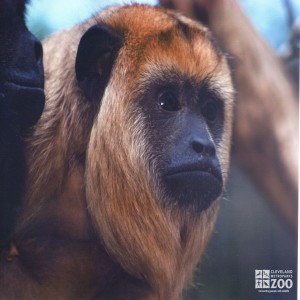Black Howler Monkey
[Alouatta caraya]

Male and female black howler monkeys are colored quite differently. Mature males are black, while the young and females are blond. (This difference between male and female is called sexual dimorphism.) Males are also larger than females, weighing about 16.5 pounds as opposed to females at 12.5 pounds. Howlers have greatly enlarged lower jaws which accommodate egg-shaped resonating chambers. These chambers enable howlers to make their unique reverberating calls. The calls warn nearby troops to keep away from feeding areas. Howlers have prehensile tails which are used mostly for balance or a sense of security.
Location: Primate & Cat
Share:
Range
The range of black howler monkeys is in central South America south of the Amazon basin.
Habitat
Black howler monkeys inhabit tropical rainforests.
Conservation Status
Least concernPrimary Threats
Gestation
180 to 195 days
Litter
1
Behavior
Black howler monkeys are slow moving, thus easily falling prey to humans, who hunt them for meat. Most of their time is spent in trees. They live in groups of 8 to 20, with females outnumbering males. There is one dominant male per group. They do not groom each other, and this could account for the high incidence of disease among them.
Reproduction
In black howler monkeys breeding takes place throughout the year, yielding one offspring. The mother has complete control of the young.
Wild Diet
Leaves, flowers, fruits, maggots
Zoo Diet
Yams, carrots, oranges, bananas, grapes, endive, monkey chow, apricot nectar, yogurt
